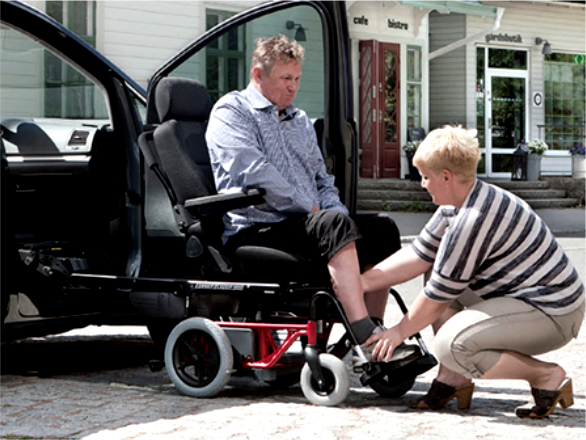Case Study 1: Getting Seated
Case Study 1: Getting Seated
Case Study 1 explores the options available for Jack to assist him getting in and out of the vehicle.

Case Study 1: Getting Seated
Jack currently drives a station wagon and uses this to commute to and from work. He currently has his vehicle equipped with hand controls to assist in driving the vehicle and a roof hoist to store his manual foldable wheelchair.
He has been driving with this combination for the past 9 years and is finding that transferring in and out of the driver’s seat is not as easy as it used to be.
Jack came to us for a solution and we could offer him the following options to make his life easier and prolong his vehicle independence. We have tried to include all options available so that if Jack has a certain budget or lifestyle preference, he can choose the solution that will suit him best.
Option 1: Turny Low Vehicle
The Turny Low Vehicle will allow Jack to easily slide from his wheelchair to the driver’s seat of the wagon by bringing the driver’s seat all the way out of the vehicle and to the same height as Jack’s wheelchair with the push of a button.
This option would enhance Jack’s transfer from his wheelchair to the driver’s seat to create an effortless transition. This transfer option is suited to someone who is losing strength and looking to prolong their vehicle independence.
Option 2: Tip-Up Plate
The Kivi Tip Up Plate will allow Jack to bridge the gap between the driver’s seat and his wheelchair by acting as a fixed transfer platform. The transfer platform is easily removed or folded back when not in use, which means that anyone else who needs to drive the vehicle can do so without obstruction.
The tip up plate requires minimal modification to the vehicle and does not require any special exemptions from the road authority’s in each state.
This option would allow Jack to continue to transfer using the strength he still has, while still aiding in making the transfer easier by bridging the gap.
Customer's Choice:
After reviewing his options Jack chose option 1, as this solution provided longevity for his transfer needs and is more likely to be applicable to future vehicle choices. This option was slightly outside of Jack’s budget; however, he was able to make a short term financial sacrifice to provide him with a long-term solution.
The Turny Low Vehicle also has a future option which is not as independent, however if jack can no longer transfer out of his wheelchair and has a carer with him during vehicle travel then this option can be upgraded to include a transfer wheelchair.
This consists of the wheelchair connecting directly to the Turny Low Vehicle swivel base allowing the occupant to stay in the seat of the wheelchair while it seamlessly slides into the vehicle.
